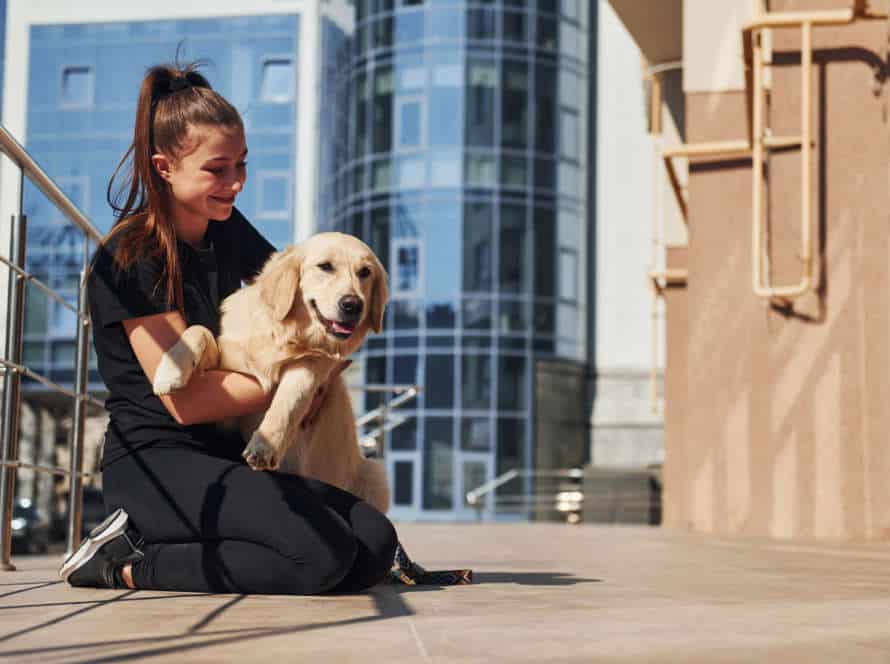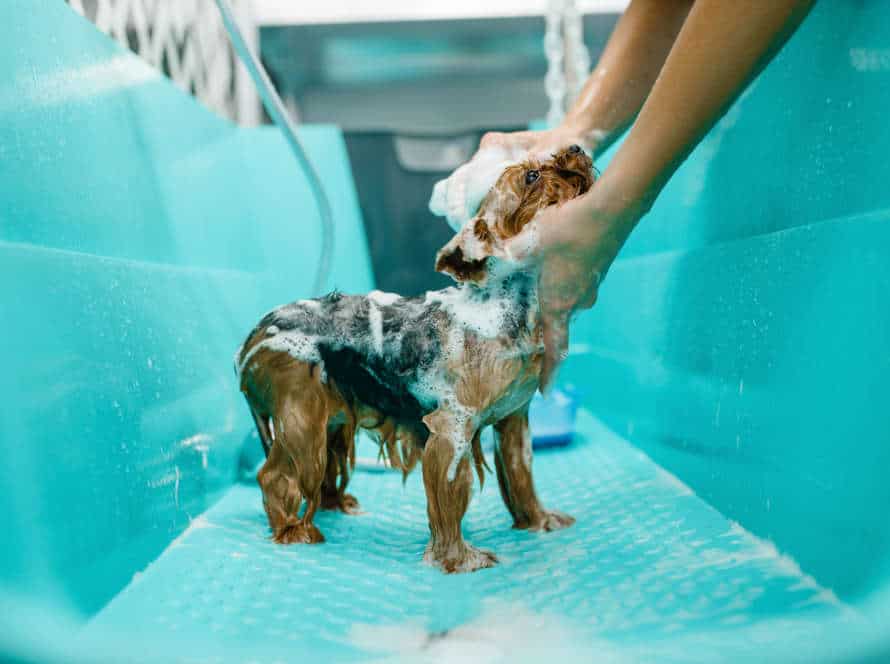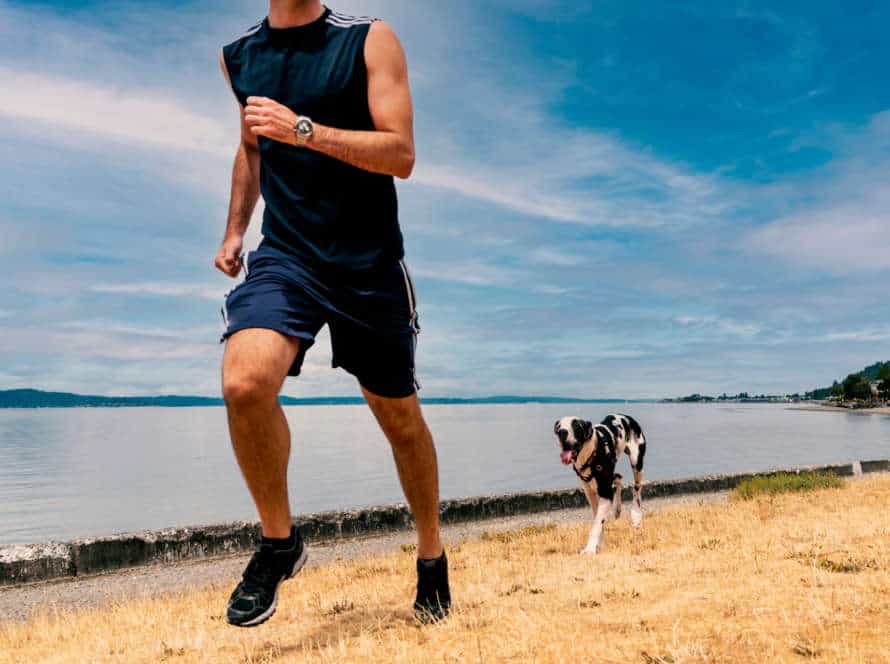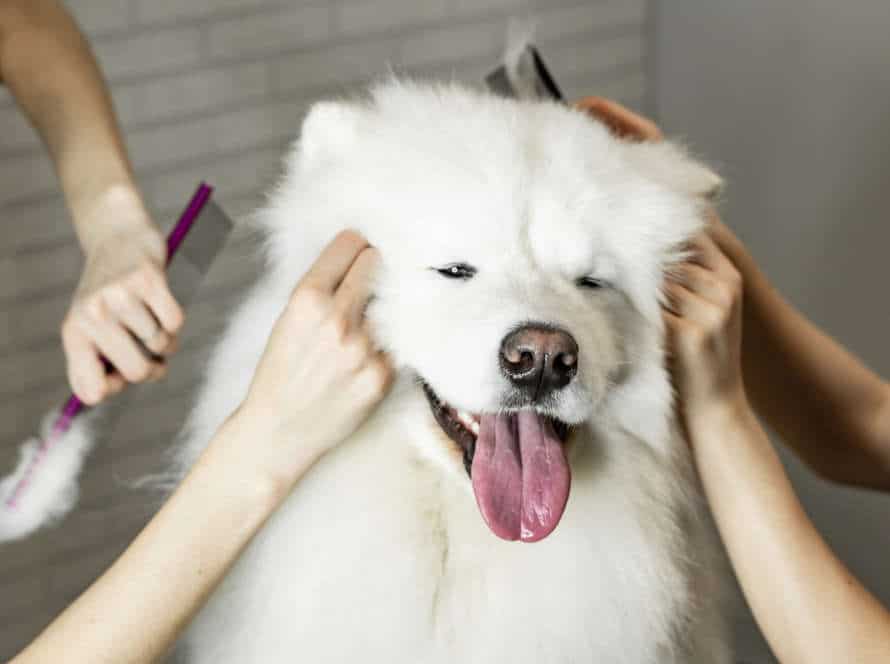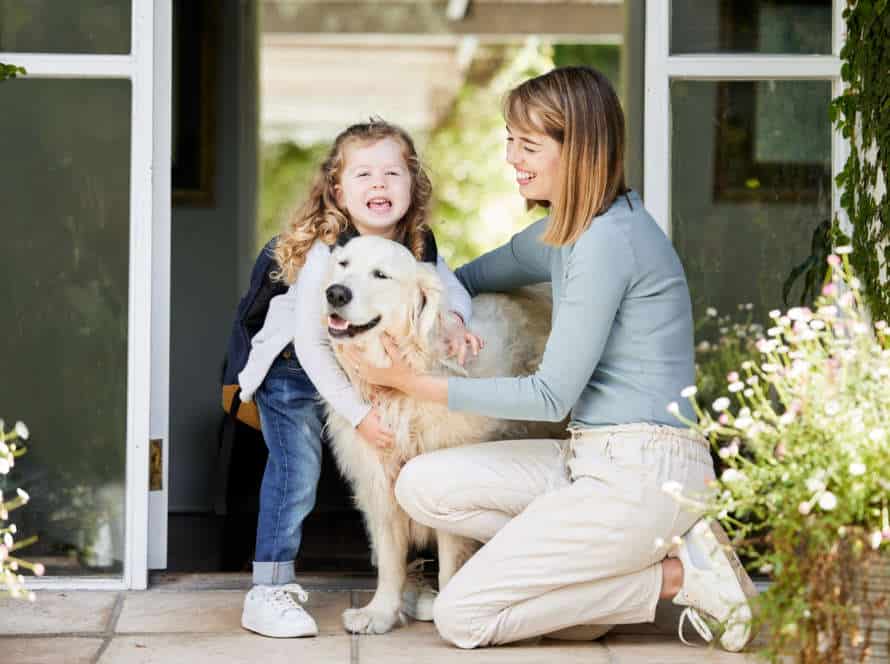Mastering the Art of Grooming Sensitive Areas: A Guide for Dog Owners
Tackling sensitive areas of your pup’s grooming can be overwhelming. But with the proper methods and products, it can become simpler for both pet and owner. Here’s a guide to becoming an expert in grooming your pup’s sensitive bits:
- Make sure your dog is calm and relaxed. It’s easier to groom them that way – take some time to soothe your pet.
- Use the right tools. Clippers, scissors, and brushes made for dog grooming are essential.
- Know which areas are sensitive. These include the face, ears, paws, and tail. Be aware and check for signs of distress.
- Go slow. Work in short bursts, and use treats or praise to calm your pup.
- Reward them! Positive reinforcement makes grooming more pleasant and reinforces good behavior.
With these tips, you can become an expert at grooming your pup’s sensitive bits.
Understanding Sensitive Areas in Dogs
Grooming Fido? It can be tough. Certain areas of a dog’s body are more sensitive than others. To figure out which areas need extra care, read on! This guide will give you the basics of understanding the sensitive spots when grooming.
Identify the common sensitive areas in dogs
Sensitive spots on doggos can differ based on their breed and personality. But, there are a few typical areas all pup parents should be aware of while grooming their fur babies.
- Ears: Doggos’ ears are sensitive and can easily get infected from moisture, dirt, or wax. Clean them carefully and never use Q-tips, as they might push debris deeper into the ear canal.
- Paws: Paws of pooches are fragile and can get hurt by rough surfaces. Also, they can be affected by bacteria or fungus, so make sure to keep them clean and dry after walks.
- Tail: The base of a doggo’s tail is very delicate, with lots of nerve endings. When handling the tail, be gentle and don’t pull or twist it.
- Belly: Most dogs don’t like when their belly gets touched, especially near their hind legs. Grooming this area requires extra caution and respect for their feelings.
- Nose: A pup’s nose is sensitive and easily gets dehydrated or irritated in hot weather. Keep it moisturized and away from harsh chemicals or irritants.
Knowing and respecting your pooch’s sensitive spots is essential for strengthening the bond between you two and making grooming sessions comfortable and stress-free.
Learn how to read your dog’s body language
Learning to read your pup’s body language is essential for grasping their emotions and needs. Here are some significant body language cues to take note of:
- Tail: A wagging tail is usually a sign of joy, while a stiff, lowered tail could point to fear or anxiety.
- Ears: Erect ears suggest alertness or inquisitiveness, while flattened ones usually mean fear or aggression.
- Eyes: Large pupils can mean fear or aggression, while squinted eyes indicate relaxation or satisfaction.
- Posture: A relaxed, loose stance implies happiness or comfort, while a stiff or crouched position could point to fear or aggression.
If you want to be an expert at petting sensitive areas on dogs, here are some tips:
- Introduce your canine to the grooming procedure gradually, beginning with less sensitive areas like the back and then gradually moving towards more delicate spots like the paws and tummy.
- Reward good behavior during grooming with positive reinforcement techniques such as treats or toys.
- Be kind and patient, never force your pooch into a grooming position that makes them uncomfortable.
Pro Tip: Taking time to comprehend your doggo’s body language will help enhance your bond with them and guarantee their welfare.
Understand the different types of reactions your dog may display
It’s very important for dog owners to understand the reactions their pup could have when grooming sensitive areas. Mastering this art will keep your pup happy and healthy. Here are three reactions to be aware of:
- Fear – trembling, cowering, or growling.
- Aggression – barking, biting, or snapping.
- Pain – whimpering, yelping, or flinching.
By recognizing these reactions and adjusting accordingly, you can ensure a safe and fun grooming experience.
Pro tip: Have patience, build trust with treats and positive reinforcement.
Preparing for Grooming Sensitive Areas
Grooming your pup is super important, but it can be tricky with sensitive areas. To make it easier and more successful, take these steps to prepare for grooming them. Here’s how:
Gather the necessary supplies
Grooming your pup’s sensitive areas needs careful prepping. Here are the things you need:
- Soft-bristled brush – this will help take dirt and mats away without hurting their skin.
- Trimming scissors – pick a good quality pair to trim fur in sensitive areas, like ears and paws.
- Grooming clippers – needed for belly, groin and anus. Look for ones with low noise and vibration levels.
- Shampoo and conditioner – use mild ones that fit your pup’s breed and coat type.
- Styptic powder – helpful in case of any accidental cuts, so it stops bleeding.
- Cotton swabs and pads – useful for cleaning delicate areas, like ears and eyes.
- Towels – get several clean, soft towels for drying.
Gather these supplies and you’re ready to groom your pup, making sure their comfort and safety come first.
Choose the right grooming area
Creating the ideal grooming area is key to keeping your pup relaxed and content when grooming delicate spots. Having a dedicated spot for grooming takes the stress off both you and your pup. Here’s how to pick the right area:
- Select a peaceful and fairly quiet area, away from distractions and noises which may agitate your dog.
- Make sure the space is well-lit. And, if you plan to use tools such as clippers or hairdryers, have access to water and electrical outlets.
- Use a comfortable, secure space, like a grooming table or mat. This will help to prevent slipping and sliding.
- Keep grooming supplies nearby and organised. This will help to reduce the chances of stressing out your dog.
By following these suggestions, you will be able to create a safe and calm environment. Making grooming your pup’s sensitive areas a breeze!
Prepare your dog mentally for the grooming process
It’s essential to mentally prep your pup for the grooming process, to keep them cool & comfy. Here are tips to help:
- Pet & talk to pup before starting.
- Show pup grooming tools, like trimmers, ear cleaners & brushes.
- Give treats as rewards throughout.
- Take frequent breaks.
- If they look stressed, stop & come back later.
Mental prepping will make grooming sensitive areas easier for both you & pup.
Grooming Sensitive Areas of Your Dog
Grooming your pup can be tricky, especially for sensitive areas. It doesn’t have to be intimidating though! This guide will provide you with the best practices for grooming your pup’s sensitive spots. That way, it’ll be fun for both of you!
Ear care and cleaning
Looking after your pup’s ears is vital for their health and wellbeing. Here’s how you can help:
- Check your dog’s ears often for redness, swelling, discharge, and bad smells.
- Use a cotton ball or pad to delicately wipe away dirt, wax, and debris.
- Do not put anything into their ear canal, as it can lead to infection.
- Ask your vet for an ear cleaning solution if needed.
- Give them a treat afterwards to make it a positive experience.
Maintaining their ears regularly will stop ear infections and keep your pup healthy and contented.
Eye care and cleaning
It’s vital for dog owners to care for their pup’s eyes. Following eye-care guidelines will help keep them healthy, free from infections or injuries. Here’s how:
- Regularly inspect eyes for redness, swelling, or discharge.
- Gently clean the area around eyes with a soft, damp cloth or cotton ball. Wipe away dirt and debris.
- Trim the hair around eyes with scissors or special grooming tools.
- Be careful when giving eye drops or ointments to avoid hurting eyes.
- Look out for signs of discomfort or pain, like excessive blinking or rubbing of eyes. This could mean a problem that needs vet attention.
Paw care and trimming
Paw care and trimming are vital for grooming your pup! Here’s how to keep their paws and nails healthy and groomed:
- Regularly inspect for cuts, scrapes, or injuries.
- Trim their nails – but be careful not to cut the quick (pink part with blood vessels and nerves).
- File or grind any rough edges after trimming.
- Apply paw balm or petroleum jelly to soothe dry or cracked paw pads.
- Trim excess hair on the pads with scissors or clippers.
- Avoid leaving wet paws for long, to prevent bacterial or fungal infections.
With these tips, you can keep your pup’s paws healthy and comfy, like an expert!
Anal gland care and expression
Anal gland care and expression is important for your dog’s sensitive areas. Anal glands are located near the anus and produce fluid for scent marking and identification. But, if these glands get blocked, your dog may feel pain or get an infection. Here are some steps to help:
- Gather latex gloves, paper towels, and an expression tool.
- Put your pup in a comfortable position.
- Use gentle pressure with the expression tool to release fluid and relieve pressure.
- Clean and disinfect the area with a paper towel and antiseptic.
- Check for any signs of infection and contact your vet if any are found.
Expressing the glands regularly can stop discomfort and infection. But, be careful not to hurt your pup!
Bathing and hygiene for the genital area
Bathing and hygiene for your dog’s genital area is important. Follow these tips to make sure your pup stays healthy:
- Use a mild, gentle shampoo specifically for dogs.
- Rinse the area well and make sure all soap is gone.
- Dry the area completely to avoid infections.
- Brush the fur regularly to avoid tangles.
- Be on the lookout for any signs of infection, such as redness, swelling, or discharge. Consult a vet if needed.
By following these steps, you can guarantee your dog is kept clean and healthy.
Tips for Successful Grooming
Grooming your pup can be a vital, but intimidating job. It’s essential to brush and groom your dog properly, to make sure they are healthy and content. When it comes to areas like the face, ears, and paws, extra care must be taken. Here are a few tips to help you excel at grooming these delicate parts:
Use positive reinforcement techniques
Positive reinforcement is key when it comes to grooming, especially in more sensitive areas. Here are some tips to make it easier:
- Start Slow – Don’t rush into grooming sensitive areas. Dogs might get anxious or aggressive. Begin with less sensitive spots and work your way up with positive reinforcement.
- Treats – Offer your dog treats after each successful session. This will reinforce good behavior, and help them associate grooming with something good.
- Praise – Like humans, dogs love praise. Speak in a reassuring and soothing tone and praise them for their cooperation.
- Breaks – Don’t push your dog too hard. Take breaks if they seem anxious, and give them time to relax and become comfortable.
Using these positive reinforcement techniques, owners can create a stress-free environment for their dogs, making the grooming process much calmer and easier.
Take breaks if your dog becomes stressed
Grooming your pup can be a stressful experience for you and them. Especially when you’re working on sensitive areas such as the ears, paws, or tail. So, if you see your dog is getting worked up, it’s important to take breaks. To make grooming these areas easier, here are some tips:
- Use treats and compliments to keep your pup motivated.
- Start with short sessions and increase the duration gradually.
- Don’t use force or punishment, as this will only add to the stress.
- Take frequent breaks for your dog to rest and relax.
- If your pup gets too stressed or aggressive, stop the session and get help from a pro.
With patience, practice, and positive reinforcement, you can master the art of grooming sensitive areas. Making the experience stress-free for both you and your furry friend!
Use appropriate grooming tools and techniques
Grooming your dog is a must for pet care. To do it right, use relevant tools and techniques especially for sensitive areas. Here are some helpful tips:
- Use proper tools: Get scissors with dull edges, ear cleaning solution, and a soft-bristled brush for the face, paws, and ears.
- Gently brush: Don’t cause discomfort or pain when brushing your pup’s fur.
- Be patient: Grooming sensitive areas takes time. Let your dog get used to it.
- Treats reward: Treats make the process a positive experience.
- Get help: If unsure, seek professional assistance.
When to Seek Professional Help
Grooming sensitive areas of your pup? Professional help is the way to go! Groomers are experienced in giving safe, thorough groomings. But, sometimes, you must get professional help. Let’s look at when this is necessary and what to do if you find yourself in one of these situations.
Recognize signs that your dog needs professional grooming
As a dog owner, it’s vital to spot the signs that your pooch needs professional grooming. Home grooming can be a great bonding activity, as well as maintain hygiene. But certain situations require help from a professional.
Signs your pup needs a groomer:
- matted or tangled fur;
- a lot of shedding;
- a persistent smell;
- overgrown nails.
If your pup’s got long hair, a professional groomer is needed for sensitive areas like eyes, ears, and paws.
It’s important to find a reliable, experienced dog groomer. They should be able to handle your pet with care and give them the grooming they need. Regular sessions will keep your pup happy, healthy, and looking their best.
Find a reputable and certified dog groomer
It’s important to find a certified and reliable dog groomer for your beloved pet. Research and recommendations are key when it comes to grooming sensitive areas. Here are some tips:
- Look online for reviews from past clients. A great groomer will have a good rep!
- Ask around for recommendations from friends and family who have dogs.
- Make sure the groomer is certified and has proper training. This ensures they know the correct techniques for those delicate spots.
By finding a certified and reputable dog groomer, you can rest assured that your pup will get the best care possible.
Understand the importance of regular grooming maintenance for a dog’s overall health
Grooming maintenance is essential for your pup’s health and happiness. It stops a lot of problems, like skin infections, tangles, and mats. Plus, it can keep them looking neat!
Grooming includes:
- brushing
- bathing
- nail trimming
- ear cleaning
- teeth cleaning
You must be aware of when your pup needs professional grooming to stay healthy. Signs like excessive shedding, matted fur, an itchy coat, and paw licking or chewing can point to a possible skin infection.
For sensitive areas like nails and ears, it’s best to get professional help. Mastering the art of grooming takes patience, time, and the right tools. This will make sure your furry friend stays happy and relaxed during the process.
Frequently Asked Questions
1. Why is it important to groom sensitive areas?
Grooming sensitive areas, such as the ears and genital area, is important for a dog’s overall health and hygiene. Neglecting these areas can lead to infections, skin irritations, and unpleasant odors.
2. Can I groom these areas myself?
While it is possible to groom these areas yourself, it is important to understand the proper techniques and tools to use in order to avoid causing harm to your dog. It is recommended to seek guidance from a professional groomer or veterinarian.
3. How often should I groom sensitive areas?
The frequency of grooming sensitive areas depends on the individual dog’s needs. Some dogs may require more frequent grooming due to their breed or coat type, while others may only need occasional upkeep. It is best to consult with a professional for personalized advice.
4. What tools do I need for grooming sensitive areas?
Some tools that may be necessary for grooming sensitive areas include clippers, scissors, combs, and ear cleaning solution. It is important to use high-quality, properly maintained tools to ensure a safe and effective grooming experience.
5. How do I calm my dog during grooming?
There are various techniques to help calm and soothe a dog during grooming, such as using treats, calming pheromones, and playing calming music. It is important to make the grooming experience as positive and stress-free as possible for your dog.
6. What should I do if I notice any abnormalities during grooming?
If you notice any abnormalities during grooming, such as discharge or inflammation, it is important to seek guidance from a professional. These can be signs of an underlying health issue that may require medical attention.


